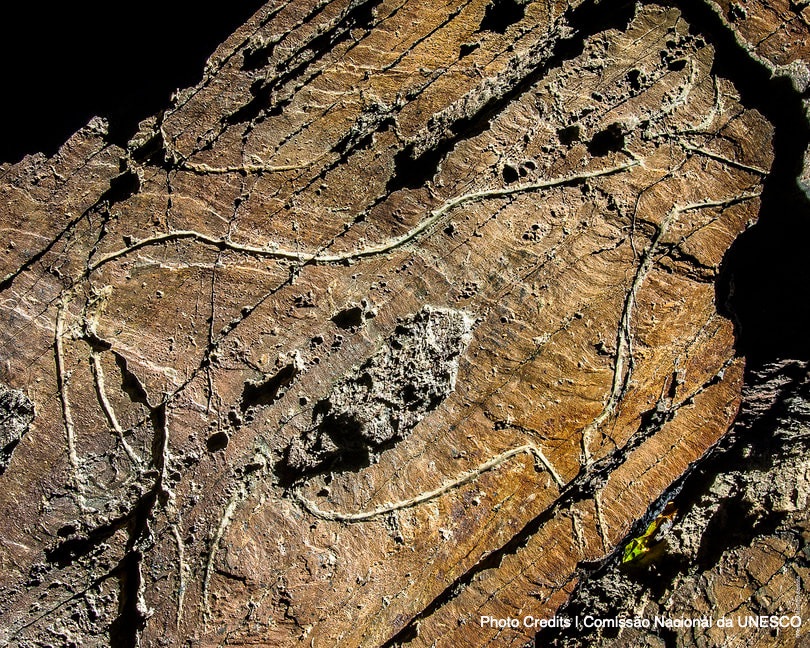|
Parque Natural do Douro Internacional (PNDI) is quite a challenging name, but it's one worth keeping in mind. The natural park covers part of 4 different municipalities: Miranda do Douro, Mogadouro, Freixo de Espada à Cinta and Figueira de Castelo Rodrigo. Each area has its own highlights, but it's possible to cover the main ones in a 2-day road trip. Below we tell you about some of the main reasons to visit. Remote and peaceful territoryIt is known as International Douro because the park covers an extensive area that is shared between Portugal and Spain, extending for over 100 km along the northeastern border. It is one of the least explored parts of the country and only recently tourism is a recognised activity in the area. With that said, it is also one of the most peaceful, wild and authentic Portuguese territories. As a portion of the park is located in a mountainous range, there's a big temperature span with cold winters and very hot summer days. This means Autumn is a great time of the year to venture there and that's why we elected it as our November 2019 destination. Old historical rootsFoz Côa archaeological park comprises an area with 80 different places where over 1200 rock engravings have been discovered. This UNESCO world heritage site is located quite near the western border of the natural park, between Figueira de Castelo Rodrigo and Freixo de Espada à Cinta. The spectacular stoned canvas are proof that the area near the riverbanks of Côa and Douro has been occupied since primitive times. Some of them can be visited with professional local guides, which is an enriching experience. Mesmerising natural landscapesThe park was created with the main purpose of preserving the geological formation (kind of a canyon) formed by both the river Douro and the river Águeda. The northeastern portion of the Douro Valley offers absolutely daunting landscapes, with the river running smoothly between gigantic cliffs. This part of the park is know as Arribas do Douro. Apart from these, there are beautiful riverbank beaches, gorgeous natural lookout points, waterfalls and green pastures. During Autumn the scenery is even more special, as the vineyards, the chestnut trees and the oak trees sprinkle the green with warmer colours, creating a beautiful contrast. To really take in the incredible landscape it's well worth hopping on a boat cruise to have a privileged view over both margins of the river or go into the wild by venturing through one of the marked hiking trails. Another options is doing a road trip and stopping in strategic points along the way. To find our favourite natural parks across the country read this article. Incredible BiodiversityFrom all the groups, birds are the ones with more expression. There have been identified 170 different species inside the natural park, and the majority of them build their nests here. The ones that attract more attention are the ones that build their nests in the rocky cliffs, such as eagles, vultures, griffons and black storks. Specially during Spring its frequent to spot them soaring up in the sky. A big conservation project has been developed to protect some of these species, which unfortunately are disappearing at a fast pace. Bird enthusiasts can find more about Birdwatching in Portugal here. Apart from birds, many other animals can be found across the natural park: wolves, wildcats, wild boars, tortoises, bats, snakes and also some endangered species of fish. Miranda do DouroMiranda do Douro is the main city inside the natural park and it's located in the northeastern corner of the country, right next to the border with Spain. Apart from the historical value, noticeable in the old monuments such as the cathedral and the castle, the city has a valuable cultural heritage. The mirandês is the second original language spoken inside the country and is as old as Portuguese and Spanish. Also in Miranda there's an intricate folklore dance that's performed by men to the sound of bagpipes. They are easily recognisable as they wear colourful (and peculiar) costumes as use small sticks (paus in Portuguese) when dancing/fighting. That's why they're known as pauliteiros. Another iconic cultural symbol is the capa de honra, a cape made with burel that was used by cattle farmers and shepherds during Winter as the pure wool protected them against the frosty air of the mountains. Nowadays it's a symbol of Miranda and used in traditional ceremonies. To learn more about all of this rich and authentic legacy, visit the town's museum. Great food paired with excellent wineApart from the incredible wine that's produced along the Douro Valley, near the natural park there's also vinho do Dão, another demarcated wine region located in Beira interior. To pair with the bold wines, local gastronomy relies on strong local flavours. The favourite dishes around the area are posta mirandesa (a succulent beef steak made from the local cow breed), roasted kid and roasted lamb, all dressed with a generous amount of the locally produced olive oil. Also the sheep and goat cheese, the honey and the dried fruits are a staple. November also means it's time for our beloved chestnuts and wild mushrooms, which are just another excuse to visit. Subscribe to our monthly newsletter to get special content, news and offers.
0 Comments
Leave a Reply. |
Categories
All
|
Telephone+351 938 503 009
|
|
Turismo de Portugal RNAVT nº 6915
|








